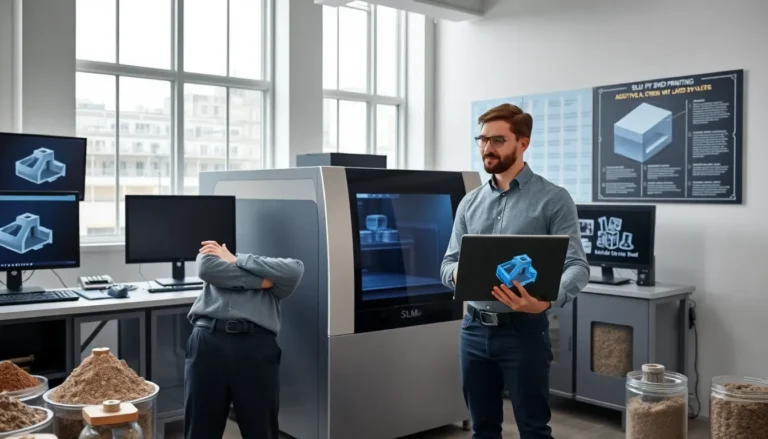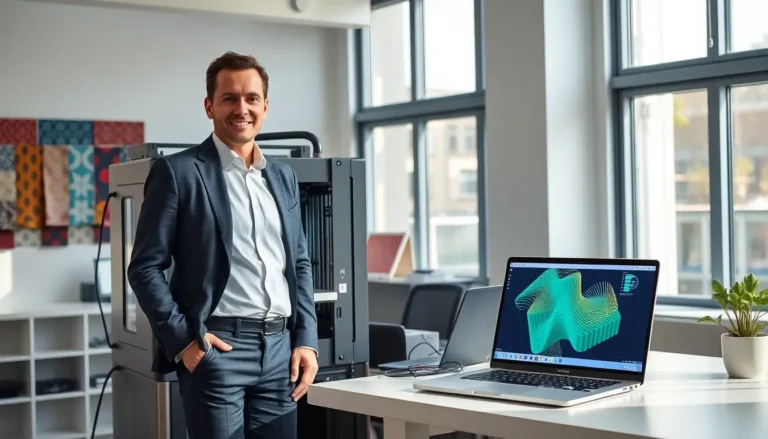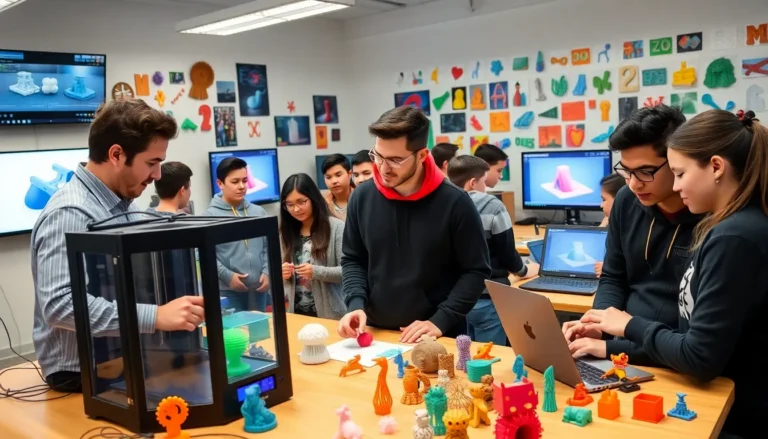Table of Contents
ToggleImagine stepping into a world where fabrics are not just woven but also engineered with precision, creativity, and a sprinkle of magic. That’s the incredible potential of 3D printing on fabric. Gone are the days when textile design was limited to colors and patterns. Now, you can customize and innovate beyond imagination, all with the click of a button. Not only does this cutting-edge technology offer unprecedented versatility, but it also evokes curiosity and excitement among designers, consumers, and tech enthusiasts alike. Let’s jump into this fascinating realm and explore why 3D printing on fabric is the talk of the town.
Understanding 3D Printing Technology

Types of 3D Printing Technologies
When it comes to 3D printing, there are several technologies that make this magic happen. At the forefront is Fused Deposition Modeling (FDM), which extrudes melted plastic to form layers. Then there’s Stereolithography (SLA), known for its precision, as it uses ultraviolet light to cure resin, making it a favorite for intricate designs. Last but not least is Selective Laser Sintering (SLS), which uses a laser to fuse powdered material. Each method offers unique advantages, giving designers the creative freedom to choose the best fit for their fabrics.
How 3D Printing Works
To put it simply, 3D printing involves creating three-dimensional objects by layering materials. Initially, a digital file is designed, often through CAD software, showcasing the desired shape and features. This model then gets transformed layer by layer, think of it like a digital cake being baked one slice at a time. The result? Unique fabric creations that can range from simple patterns to complex, functional designs.
Applications of 3D Printing on Fabric
Fashion and Apparel Design
In the fashion world, creativity knows no bounds. Designers now leverage 3D printing to craft avant-garde garments that were once mere dreams. Imagine a dress that fits like a glove or accessories that can morph and change color. These innovations not only elevate the aesthetic appeal but also allow for intricate detailing that traditional methods couldn’t achieve.
Medical Textiles and Wearable Technology
The healthcare industry is also embracing this revolution. 3D printed textiles can be embedded with sensors, creating smart fabrics that monitor health metrics. Think about wearable tech that doesn’t just look good but also serves as a lifeline for patients. The applications are limitless, improving both comfort and functionality in medical attire.
Home Furnishings and Decor
From unique curtains to customizable cushion covers, 3D printing is reshaping home decor. Homeowners can create tailor-made fabrics that blend with their interiors seamlessly. The beauty of it lies in the ability to produce pieces that are not just visually appealing but also practical. Who wouldn’t want furniture that fits their style and space perfectly?
Benefits of 3D Printing on Fabric
Customization and Personalization
The era of one-size-fits-all is fading fast, especially in textiles. With 3D printing, customization becomes the name of the game. Consumers can choose patterns, colors, and even the fabric’s texture, allowing them to express their individual styles. Brands now have the opportunity to create bespoke products that cater to specific consumer preferences.
Sustainability and Waste Reduction
In an age where sustainability is paramount, 3D printing stands tall as a beacon of hope. This technology minimizes waste by using only the necessary material to create fabric, unlike traditional methods that often produce excess. Besides, brands are experimenting with recycled materials, leading to eco-friendly products that contribute to a healthier planet.
Challenges and Limitations
Material Compatibility Issues
As innovative as it is, 3D printing on fabric does face some hurdles. Not all fabrics are compatible with 3D printing technology, and finding the right materials can be a tricky business. While some fabrics lend themselves well to printing, others might not hold up under the process, leading to the need for thorough research and development.
Cost and Accessibility
Cost remains a significant barrier for many budding designers and small businesses. While the technology is becoming more affordable, high-quality 3D printing equipment and materials can still come with a hefty price tag. Plus, accessibility to resources and training can limit the spread of this game-changing technology.
The Future of 3D Printing on Fabric
Innovations on the Horizon
What does the future hold for 3D printing in textiles? The possibilities seem endless. Innovations like bio-printing fabrics and smart textiles with integrated electronics are on the horizon. These advancements can open doors to new, unexplored territories in design and functionality, making the fabric not just a piece of clothing but a part of everyday technology.
Potential for Industry Transformation
As more players enter the 3D printing arena, we can expect transformative changes across various industries. This technology enables rapid prototyping, allowing designers to experiment freely and bring ideas to life quickly. Potentially, a new wave of fashion and design could emerge, completely reshaping consumer expectations and industry standards.







